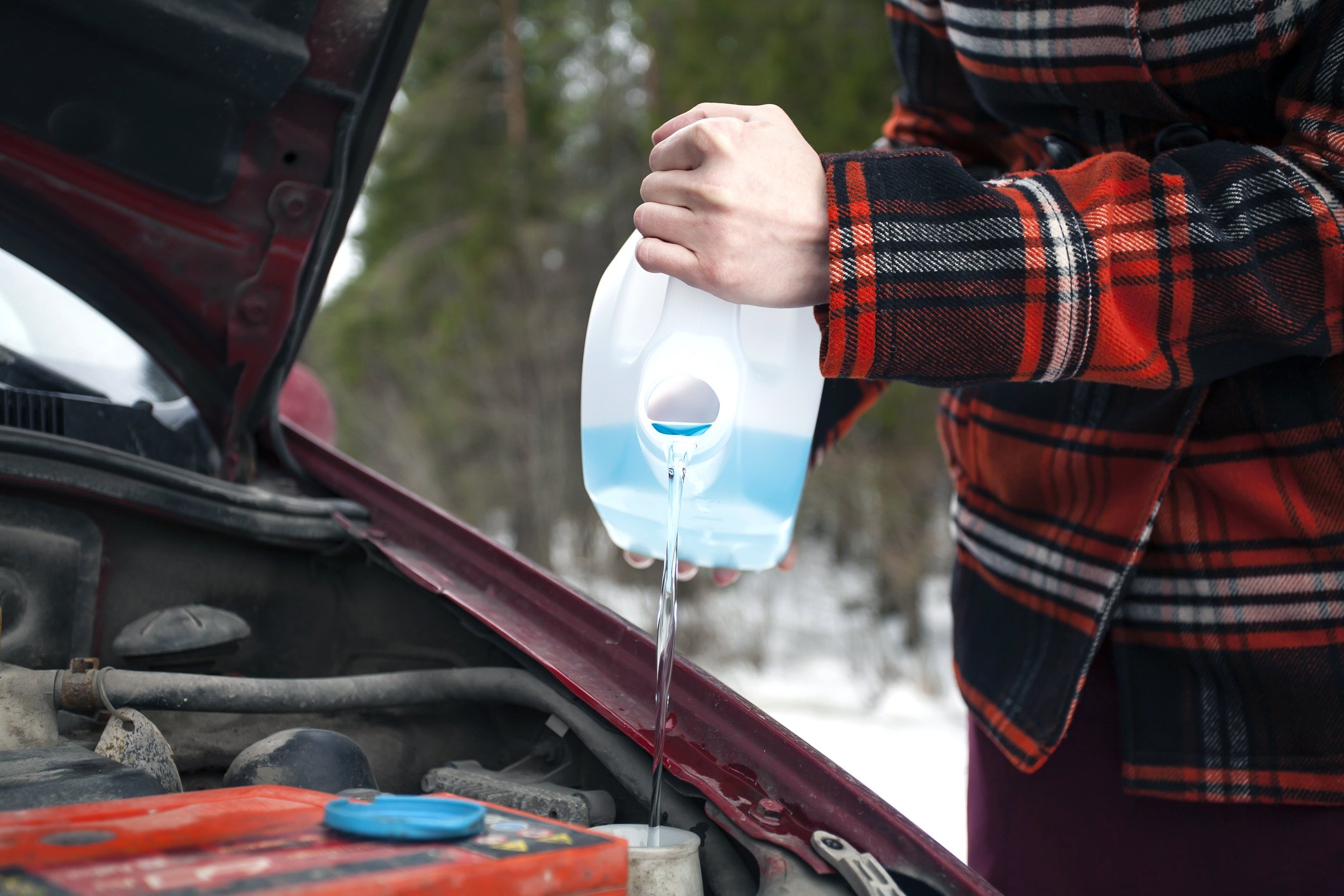Introduction:
As winter’s icy grip tightens, the last thing you want is a frozen windshield washer fluid reservoir leaving you blind to the road ahead. Frozen washer fluid can compromise your visibility and safety, but don’t panic; thawing it is a simple task. In this comprehensive guide, we’ll delve into the causes of frozen windshield washer fluid and provide step-by-step instructions on how to effectively restore its functionality.

Image: gobdp.com
Understanding Windshield Washer Fluid:
Windshield washer fluid is a vital automotive fluid designed to clean your windshield and remove debris, dirt, and insects. It typically contains a mixture of water, alcohol, and detergents. During colder months, however, the water component can freeze, rendering the fluid ineffective.
Causes of Frozen Windshield Washer Fluid:
-
Low Fluid Level:
When the washer fluid reservoir is low, more air is present, which can accelerate freezing.
-

Image: www.doityourself.comHigh Water Content:
If your washer fluid has a high water content and insufficient antifreeze, it’s more susceptible to freezing, especially in sub-zero temperatures.
-
Faulty Sensor:
A malfunctioning fluid level sensor may not accurately detect low fluid levels, leaving you unaware of the need to top up before freezing occurs.
Before Thawing: Safety Precautions
- Park your vehicle on a level surface and engage the parking brake.
- Allow the engine to cool down before opening the hood.
- Wear gloves to protect your hands from the cold and potential contact with chemicals.
Step-by-Step Guide to Thawing Frozen Windshield Washer Fluid:
-
Locate the Reservoir:
The windshield washer fluid reservoir is usually made of translucent plastic and located under the hood. It often has a washer fluid symbol or the word “washer.”
-
Warm Up the Reservoir:
Using a hair dryer or heat gun on a low setting, gently direct warm air towards the reservoir’s exterior. Avoid applying excessive heat directly to the plastic as it could cause damage.
-
Add Warm Water:
Once the reservoir has warmed up, carefully add warm (not boiling) water to the reservoir until it’s about three-quarters full. Avoid overfilling, as expansion could damage the reservoir when the fluid freezes again.
-
Activate the Washer:
Turn on the windshield washer and allow it to run for a few minutes. This will circulate the warm water and help thaw the frozen fluid.
-
Test and Repeat:
If the fluid still isn’t spraying, repeat steps 2-4 until it starts flowing.
-
Replenish and Protect:
Once the fluid is flowing freely, top up the reservoir with an antifreeze-containing windshield washer fluid. This will prevent future freezing.
Additional Tips for Preventing Frozen Windshield Washer Fluid:
-
Use Winter-Grade Washer Fluid:
Look for windshield washer fluids specifically designed for winter use, as they contain a higher concentration of antifreeze.
-
Check Fluid Levels Regularly:
Make a habit of regularly checking your windshield washer fluid levels, especially during winter.
-
Consider a Windshield Cover:
A windshield cover can help insulate the washer fluid reservoir and prevent freezing.
-
Park in a Garage:
If possible, park your vehicle in a garage or covered area to protect it from extreme cold.
How To Fix Frozen Windshield Washer Fluid
Conclusion
Thawing frozen windshield washer fluid is a simple and essential task that can ensure clear visibility and safe driving during winter. By following the steps outlined in this guide, you can restore functionality to your washer fluid and prevent future freezing problems. Furthermore, incorporating additional preventative measures, such as using winter-grade fluid and checking fluid levels regularly, will help keep your windshield washer system in top shape throughout the cold season. Remember, clear windshields are crucial for safe and enjoyable winter driving.